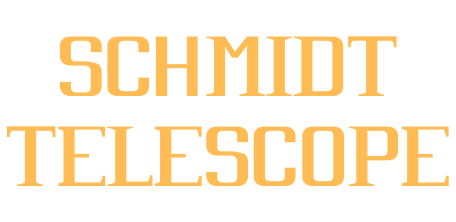
The latest and the most advanced among the telescopes which has been finally developed is the Schmidt Telescope. Before it was developed, the various telescopes that were made earlier, despite of the numerous improvements, were facing the issues of colour smears, dispersed images and another problem known as coma. Coma is the stretching of the images which either makes a star look like a comet or any object look like a coma. The cause had been the diffraction in different wavelengths from the lens of a refractor telescope or reflection in different angles from the mirror of reflector telescope. The Schmidt Telescope has also brought an end to the disappointment of the astronomers of not being able to view the sky on a large scale.
A Schmidt Telescope is rather a mixed version of refractor and reflector telescope. Lens and mirror used in it made it a catadioptric system thus following both the phenomena of refraction and reflection respectively. It is also known as Schmidt camera and was invented by Bernard Schmidt in 1930. It is used for viewing wide-range of the sky and also for photography of the same.
The Schmidt Telescope uses both lens and mirror in it. It uses a spherical mirror at the bottom as the primary mirror and an aspherical lens known as correcting plate is placed in the front end of the tube. Just like a reflective telescope, a small mirror is used to reflect the focussing light from the primary mirror to the top of the tube where an eyepiece lens is mounted.
It works on both the principles of reflection and refraction because it is using both lens and mirror. The light passing into the telescope tube passes through the correcting plate which avoids the distortion of images because of its structure. The curved part does not follow the shape of a part of a sphere. It also avoids the spherical aberration of refractor and reflector telescopes. The light then reaches the spherical mirror placed at the bottom and reflects back focussing on a focal point. With the help of a small mirror placed before the focal point, tilted at an angle of 45°, the focussing lights are reflected towards the top of the tube. Through an opening on the top, an eyepiece lens is placed so as to magnify the image of the object.
The Schmidt Telescope which the Swedish-Estonian optician, Bernhard Schmidt, invented has various variants developed by other space enthusiasts. Some of them are as follows:
-
Shcmidt-Maksutov Telescope: It was developed by the Russian optician Dmitry D. Maksutov in the year 1941. This telescope has features and functions similar to that of the Schmidt Telescope, the only difference is that its corrective lens has one side which is concave and the other is convex.
-
The Campo Imperatore Schmidt: It is the Schmidt Telescope installed in the Campo Imperatore, a plateau of Rome. It uses a prism, which is known as objective-prism, instead of the primary spherical mirror.
The advantages that a Schmidt Telescope has are as under:
-
It provides a deep sky observation and helps in astrophotography, which photographs and captures the images of astronomical objects and vast view of night sky.
-
The closed tube design of the Schmidt Telescope reduces degradation of images due to the air currents.
-
It is compact, durable and less expensive compared to those of refractor telescopes.
-
It is easy to use and also maintenance free.
-
Most importantly, it avoids the chromatic aberration and coma which has been a major issue for the previous telescopes.
The disadvantages of Schmidt Telescope are as follows:
-
Though it is less expensive than refractor telescope, it is more expensive than the reflector telescope.
-
Due to the obstruction of the secondary mirror, there might be a slight loss of light.
G Kowledge of | 0 Comments >>
0 Comments
Leave Comment
Your email address will not be published. Required fields are marked.